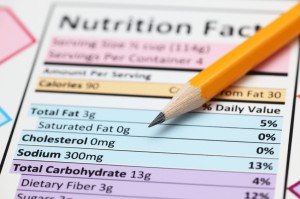Three less than appetizing ingredients that may be in your food
 Do you know what’s in your food? Chances are you weren’t expecting these nasties…
Do you know what’s in your food? Chances are you weren’t expecting these nasties…
Ever since the horsemeat scandal, more and more of us are looking into what is really in our food in an attempt to avoid any nasty surprises. Even if you are diligent in your label reading, there could still be things in your food you would rather not eat, from human hair to arsenic.
Most of the items on our list occur due to additives and food processing techniques. This serves as a gentle reminder that when it comes to nutrition, non-processed foods are your best bet.
Arsenic
Finding traces of arsenic in our food is nothing new, this carcinogen has been known to turn up in a range of foods from cereal to juice. Recently German researchers discovered traces of it in beer and noted that levels found were more than twice of what is allowed in drinking water. This substance occurs due to the filtering process of wine and beers, so if you want to err on the side of caution – opt for unfiltered drinks.
Human hair
L-Cysteine is an amino acid that is used to prolong the shelf-life of foods such as commercial bread. This amino acid can be found in a range of materials from duck feathers to cow horns, but the material it is sourced from to prolong the shelf-life of food is human hair. It has been reported that most of the hair used to make L-Cysteine comes from China, where it is collected from hairdressing salons. If you want to avoid this, try to buy fresh bread from a local baker and avoid fast food places as they all use L-Cysteine.
Beaver anal glands
If you are partial to a bit of vanilla, strawberry or raspberry ice cream, you may well be eating anal and urine secretions of a beaver. Castoreum is an FDA-approved food additive used in ice cream and it comes from the castor sacs of male and female beavers. Described as ‘natural flavouring’, it can be hard to avoid.
If you want to learn more about what goes into the food you’re eating, speaking to a qualified nutritionist could help. For more information about what a nutritionist does and how they could help, please see our FAQ section.
View and comment on the original Guardian article.

Find the right nutritionist for you
All nutrition professionals are verified